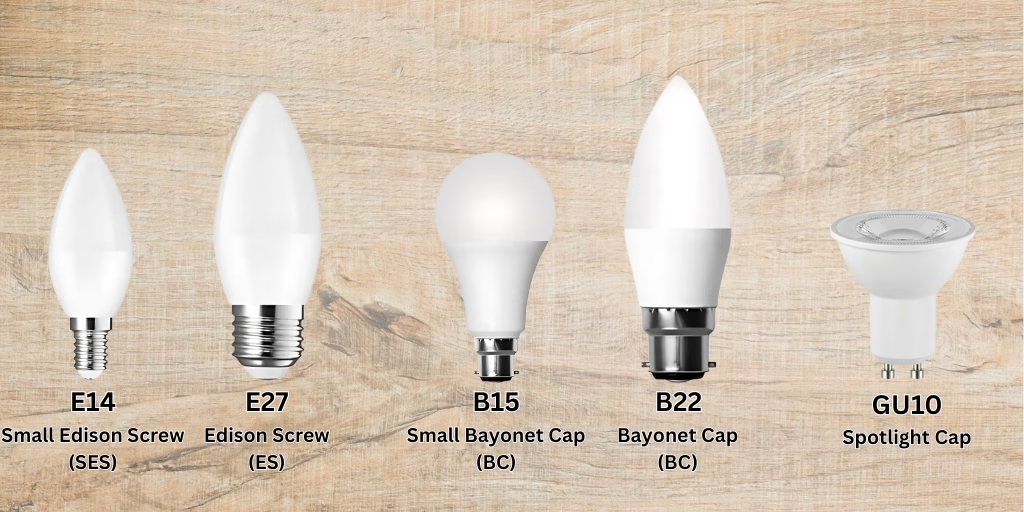Smart Bulb Fittings Guide
As smart lighting continues to grow in popularity, one of the most common questions people face when switching from traditional bulbs is: Which smart bulb fitting do I need? Fortunately, smart bulbs are designed to work just like standard bulbs when it comes to fittings—meaning, if you know what type of bulb your current light uses, you can find a smart equivalent with ease.
The most common smart bulb fittings are: E14, E27, B15, B22, and GU10. This guide gives details about these common fittings
Are Smart Bulb Fittings the Same as Regular Bulbs?
Yes! Smart bulbs use the exact same fittings as traditional incandescent, halogen, or LED bulbs. The difference lies in the technology inside: smart bulbs contain built-in Wi-Fi, Bluetooth, Zigbee, or other wireless chips that let you control lighting with your phone, voice assistant, or home automation system.
So if your lamp takes a standard E27 screw bulb, a smart E27 will slot right in—no adapters or modifications required.
Common Smart Bulb Fittings Explained
E14 (Small Edison Screw)
- Also known as: SES (Small Edison Screw)
- Base diameter: 14mm
- Common uses: Chandeliers, wall sconces, bedside lamps, decorative or accent lighting
- Best for: Smaller fixtures where space is tight or the bulb is more for ambience than powerful lighting
E27 (Edison Screw)
- Also known as: ES (Edison Screw)
- Base diameter: 27mm
- Common uses: Ceiling pendants, floor lamps, table lamps, and general-purpose lighting
- Best for: Most standard fittings in living rooms, bedrooms, and kitchens
B15 (Small Bayonet Cap)
- Also known as: SBC (Small Bayonet Cap)
- Base diameter: 15mm
- Common uses: Decorative light fittings, wall lights, small ceiling lights
- Best for: Smaller fixtures in homes where bayonet types are common
B22 (Bayonet Cap)
- Also known as: BC (Bayonet Cap)
- Base diameter: 22mm
- Common uses: Ceiling lights, pendant fixtures, standard lamps
- Best for: Common in the UK, Australia, and New Zealand; ideal for general-purpose lighting in larger spaces
GU10 (Twist & Lock Spotlight)
- Also known as: GU10 mains voltage spotlight
- Pin distance: 10mm between pins (not screw or bayonet)
- Common uses: Recessed downlights, track lighting, kitchen spotlights, bathroom lighting
- Best for: Directional lighting where focused beams are required, such as accenting artwork or task lighting in kitchens. Many outdoor wall washer style lights use GU10 bulbs
Choosing the Right Smart Bulb
When selecting a smart bulb, you’ll want to match the fitting type, but also consider:
- Brightness measured in lumens
- Colour options tunable white vs full RGB
- Smart ecosystem compatible with Alexa, Google, Apple HomeKit, etc t create automations e.g. have a light sensor turn the bulb on when it gets dark
- Control method Wi-Fi, Bluetooth, Zigbee, etc.
- Dimmable It’s also worth noting that some fixtures may require dimmable bulbs, in which case make sure your smart bulb supports that function and works with your existing dimmer switch (if any).
Smart lighting is all about convenience, customisation, and efficiency—but getting the right fitting is key to starting off on the right foot. Now that you know the differences between E14, E27, B15, B22, and GU10, you can confidently choose the right smart bulb for any fixture in your home.





